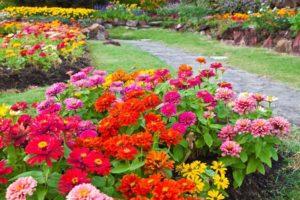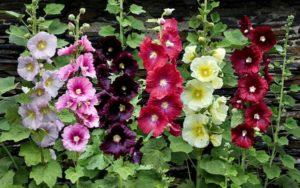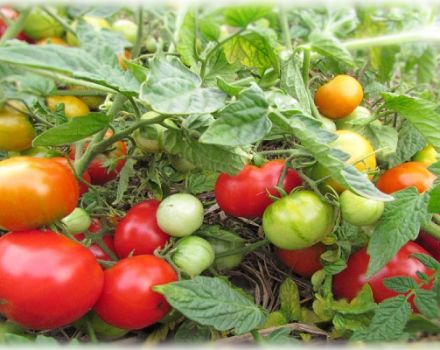Planting and caring for perennial garden primrose, growing from seeds
Primroses are one of the symbols of spring. This is the name of the primrose, which appears on the slopes of the mountains with the first rays of the spring sun. Delicate beautiful garden primroses of a perennial type are grown in private plots, planting flowers and caring for them is not so difficult. The flowerbeds that are decorated with primroses leave no one indifferent.
Primrose features
Primroses have been known for centuries. Flowers were called "the first", they were considered a talisman bringing good luck, they were used for the preparation of medicines. The beauty and tenderness of a small flower made it popular and in demand. Different color shades of petals give a special charm, make the plant even more attractive for planting in areas where it is necessary to add bright colors.
The flower is classified as a perennial plant, it has specific features:
- roots: strong, short with many branches;
- leaves: dark green, narrow, with denticles at the edges, depending on the species, they can grow from 5 to 25 centimeters;
- flowers: collected in complex inflorescences, the funnel-shaped part of the color can grow up to 5 centimeters.
After flowering, the seeds are collected in a box. On the territory of Russia, primroses bloom from April to July. Primrose is ubiquitous and grows in moist, nutritious soils. Some species are included in the Red Book.
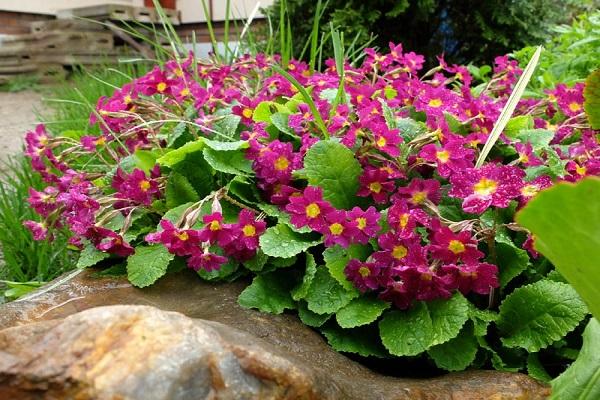
Main types
Among the variety of botany species, about 200 specimens are distinguished, which are grown in garden plots in a temperate climate.
The classification is based on the difference between the inflorescences:
- Candelabra or tiered. Inflorescences are formed from several layers that are located one above the other. Representatives of this type grow in mountainous areas, reproduce by seed, and they can also be planted by dividing the mother bush into 2 parts. The most popular representatives: Japanese primrose, Bulley flower, Bissa.
- Umbellate. Flowers with inflorescences in the form of an umbrella grow in Europe. The peculiarity of the variety lies in the formation of small flowers. Primrose is high, polyanthus, ear and spring.
- Cushion-shaped. This type includes small bushes of primroses with single flowers. They are especially popular with collectors due to the fact that they are not like other types. Primula ordinary, small, Julia.
- Bell-shaped. Another type that is found in areas of mountains and foothills.The peculiarity lies in the presence of a high stem, which is crowned with an inflorescence - a bell. Florinda primrose and Sikkim.
- Spherical. Ornamental varieties with an elongated stem and a dense head covered with small flowers. The species of these primroses can grow in the mountains, and also be used in the landscape of garden and park areas.
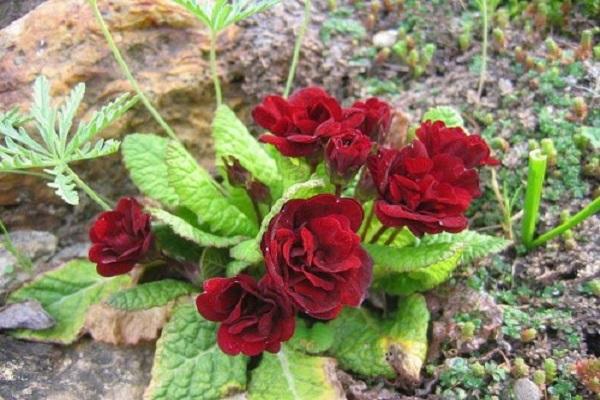
The specifics of growing crops
For growing primroses, open sunny areas of the garden, as well as shaded areas, are suitable. Care rules determine the peculiarity of the structure, which depends on the variety. The varieties most common among flower growers are grown according to a specific pattern.
Sowing seeds
Primroses can be propagated by seed. After flowering, small black grains fill the seed box tightly. The peculiarity of the planting material is that it quickly loses its ability to germinate, it must be sown as soon as possible.
The seed is buried in the ground immediately after collection. If quick sowing is not possible, then the planting material is stored at + 14-16 degrees.
For sowing varietal seeds are subject to additional preparation:
- freezing at temperatures from -2 to +4 degrees;
- calibration;
- disinfection to protect against fungal diseases.

Information! When buying hybrid seeds, treatment is not carried out.
Seedling
After sowing, you need to be patient: primrose seeds sprout very slowly. In order to provide optimal conditions for seedling and seedling growth, it is necessary to prepare:
- inventory for creating a greenhouse effect;
- a room with a temperature not lower than +20 degrees;
- lighting for 10-12 hours;
- nutrient soil with a drainage system.
What time is better to plant
Given the characteristics of the seed, primroses are sown after harvest. The final stage of seed collection is August. When sowing store-bought material for seedlings, February is the best option.
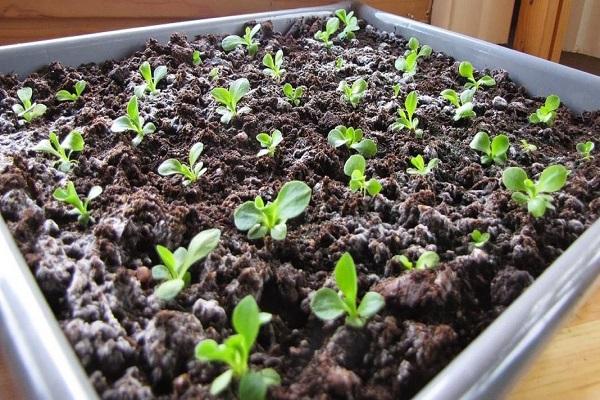
Permanent site preparation
Primroses are transplanted to a permanent place of growth in autumn or spring. It depends on the age of the seedlings, preference is given to seedlings for 2 years of existence.
First, prepare the soil:
- Digging up the site.
- Shredded moss is introduced.
- Add humus and sand.
- Digging up again.
Before planting primrose, choose areas covered by trees or shrubs from direct sunlight. Only mountain alpine varieties can be planted under the open sun.
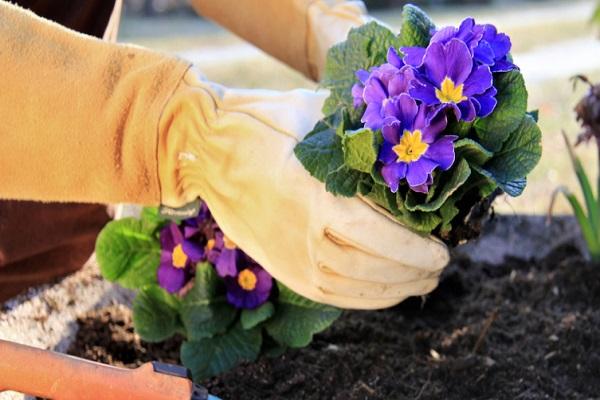
Transplanting primrose into open ground
The basic rule when planting in open ground areas: respecting the distance between the bushes.
| Between compact small varieties | 15 to 20 centimeters |
| Between large species prone to overgrowth | 25-30 centimeters |
Warning! The primrose, planted by seed, blooms for 2 or 3 years of existence.
Primrose Care Tips
After planting, a period begins when the plant adapts to new conditions. The florist's task is to facilitate the adaptation period and build a care scheme.
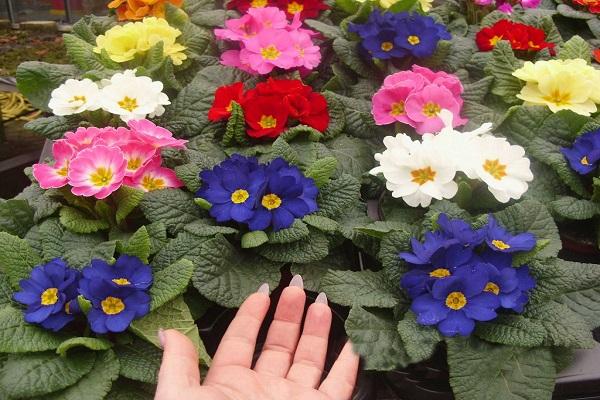
Watering crops
Weekly watering is accompanied by a slight loosening of the soil. When hot dry weather sets in, the amount of watering is increased. 1 square meter requires about 3 liters of warm water.
Plant feeding
During the growing season, primroses are fed weekly. The first feeding is carried out with the appearance of 2-3 leaves, ends at the last stages of flowering.
For feeding, use in turn:
- potash fertilizers;
- phosphoric mixtures.
Pruning rules
Pruning is carried out in the spring, after the snow has melted. Removes dried and dead stems. In the fall, dried inflorescences are cut off on the bush.

How to prepare a plant for winter
Varietal flowers, which are of particular value to owners, are usually dug up and left for wintering at home.
Common varieties must be covered for the winter.The first step in preparing for winter involves adding organic fertilizers to the roots, which may become exposed after flowering.
When frost approaches, in October-November, the soil around the bush is mulched. To do this, choose sawdust, peat, pine needles or sawdust. Then the plant is covered with spruce branches from above. The snow cover becomes the second top layer of the cover.
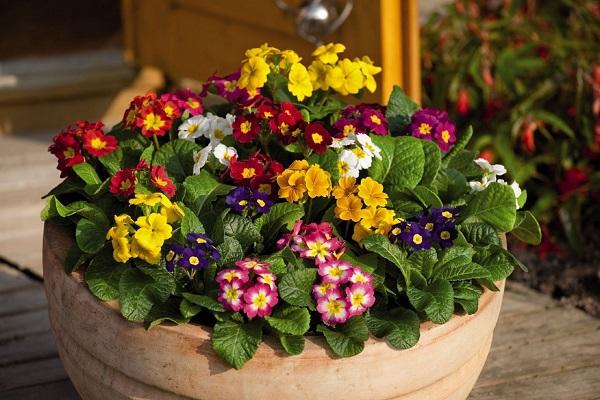
Protection against diseases and pests
Garden primrose is susceptible to fungal diseases. They can develop due to the peculiarities of climatic conditions. Excessive moisture leads to damage to the root system. Primroses can become infected with powdery mildew, gray mold, or anthracnose.
The most common insect pests are aphids, slugs, ticks and fleas. To protect the plant, they are treated with chemicals: Nitrofen, Bordeaux liquid, tobacco or soap solutions.
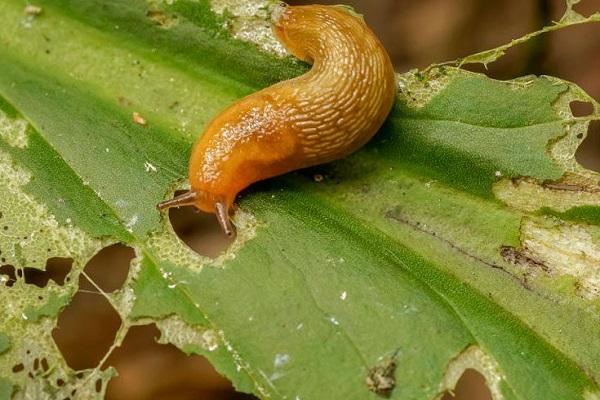
Problems for gardeners when growing primrose
When caring for primroses, some nuances are taken into account.
- Drying and wilting of leaves indicates insufficient watering. The reason may also be the wrong choice of the landing site. Direct sunlight is often the cause of burns on sheet plates.
- Withering, dying off of plant parts, dropping of the ovaries indicates the beginning of the process of rotting of the root system. The reason is the constant waterlogging of the soil, moisture retention.
- Smaller flowers, weak flowering indicate a lack of nutrients in the soil. During flowering, garden primroses need additional feeding with potassium-phosphorus complexes.
- The appearance of spots on the leaves, drying of the tips indicates the development of infection or the appearance of insect parasites.
If problems arise, they carefully examine the bushes and make a decision, depending on the cause of the problem. The following steps usually help:
- increasing or decreasing the number of waterings;
- shading the area where the primrose is planted;
- transplantation by dividing the bush (this method is used for adult overgrown specimens);
- processing with special means;
- feeding in small portions according to the established scheme.
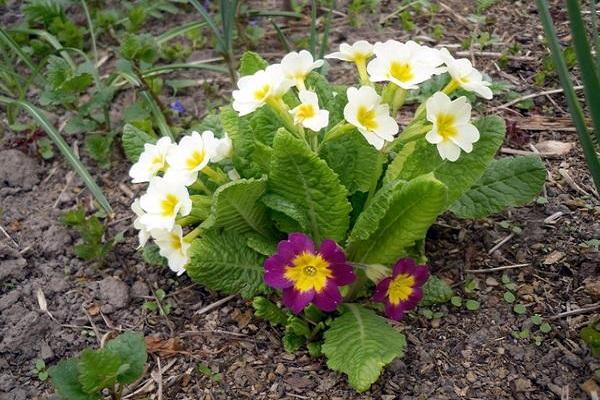
Breeding methods
Many growers believe that seed propagation for primroses is far from the easiest and most effective. In the presence of an adult bush with a developed root system, flower breeding can be achieved in one of the following ways:
- cuttings;
- dividing the bush.
Primroses can be propagated by cuttings at any time of the year. On an adult bush of the selected variety, a leaf is cut at an acute angle. Then it is rooted in water with the addition of a biostimulant and transplanted onto prepared soil. Seedlings are grown during the winter, subject to the necessary conditions. The shoots are transplanted in the spring to suitable flower beds.
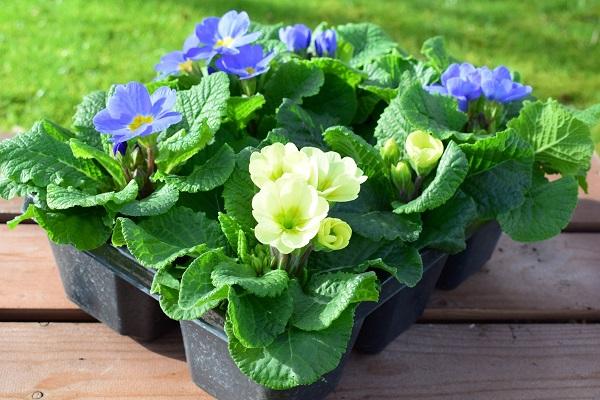
Dividing a bush is one of the ways that allows you to fully preserve varietal characteristics. An adult bush is dug up, the roots are cleaned from the ground and divided into parts with a sharp knife.
The cut sites must be treated with a disinfectant. For this, crushed activated carbon is used.
Each part should have its own growth point. The plants are then planted according to the recommended planting plan. The hole is mulched and looked after, as for adult bushes.
